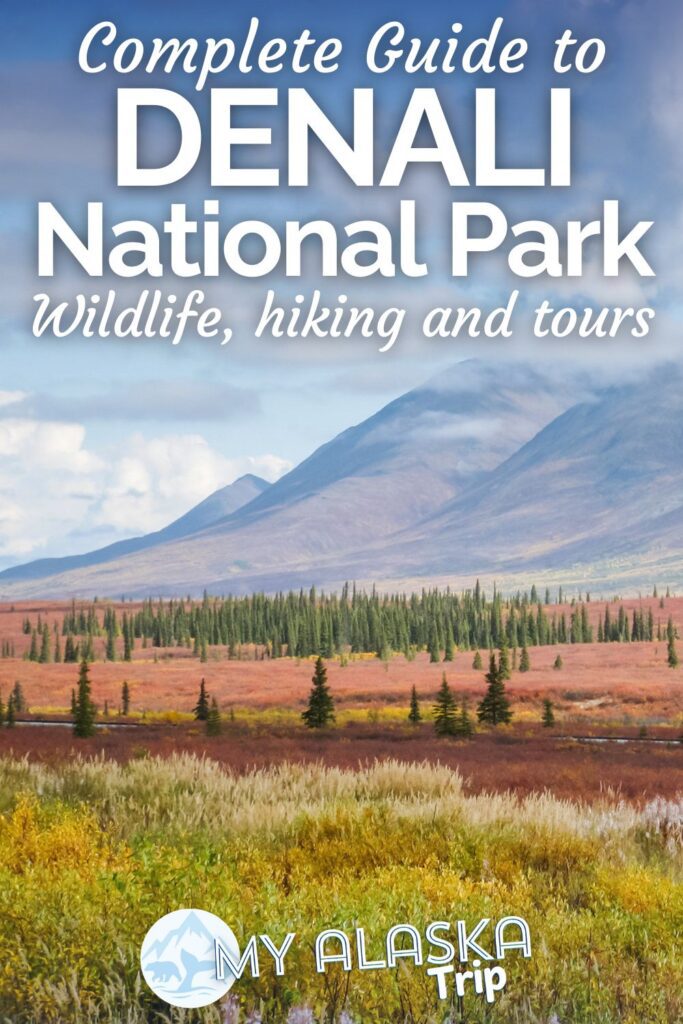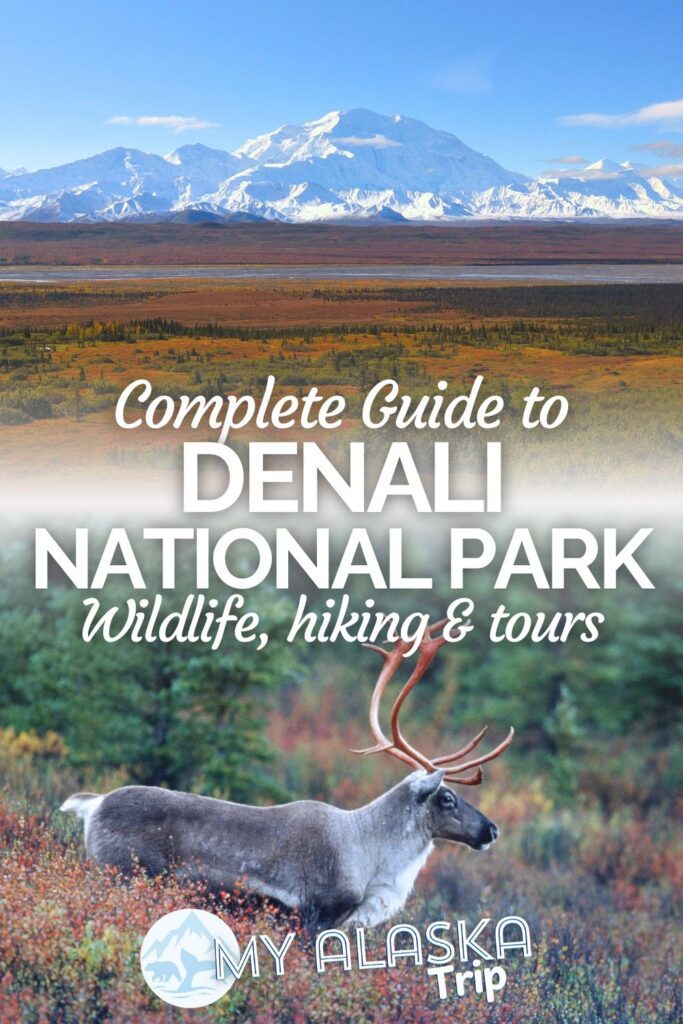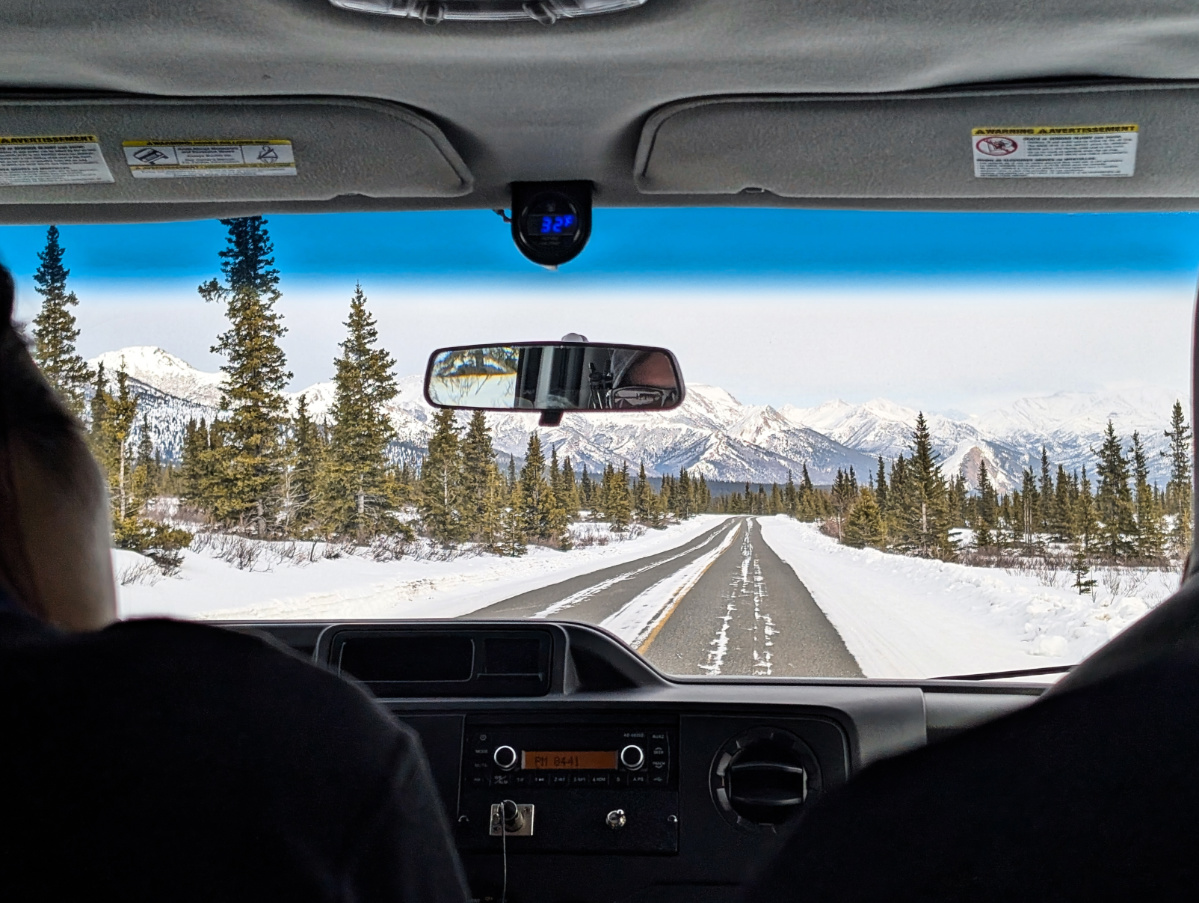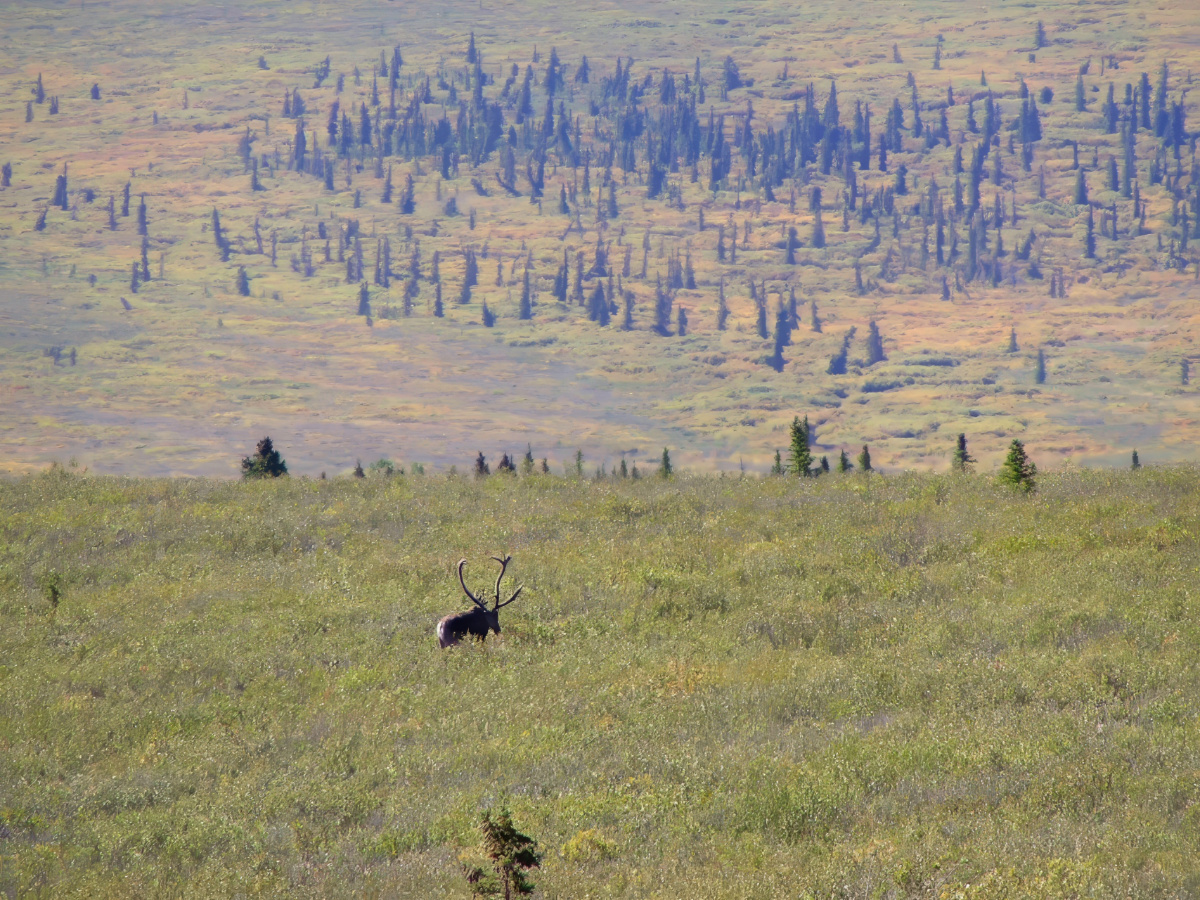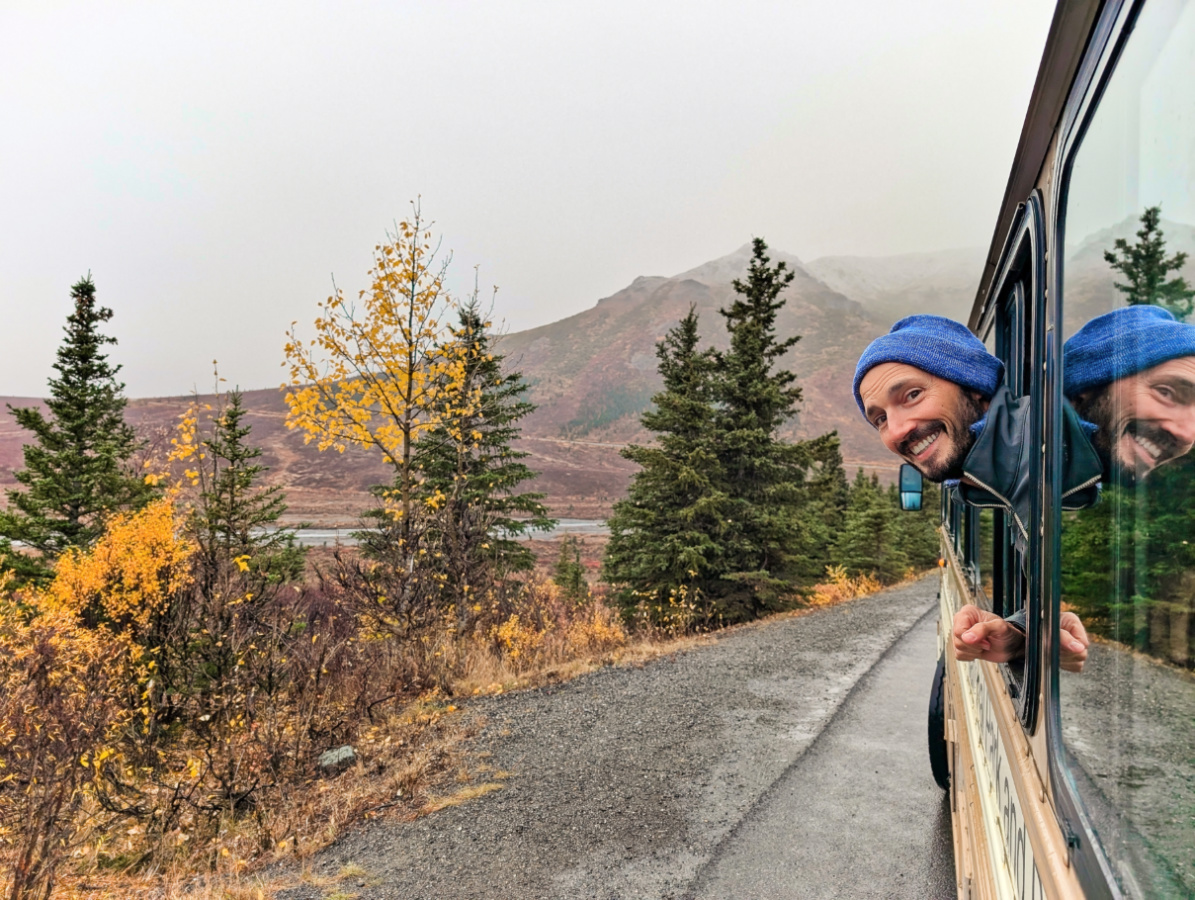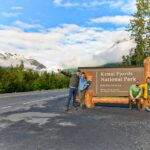The first time I visited Denali National Park I fell instantly in love with it. I was on a 6:00 am bus into the park and went all the way to the Eielson Visitor Center. I saw countless bears, caribou and moose. It was only my second day after I had moved to Alaska and it left a forever impression on me. This guide to Denali National Park will show off the best of park, all the cool things to do and the beautiful wildlife I hope you’ll see.
Did you know that Denali National Park was the first park ever set aside specifically for the preservation of wildlife? It’s true and it’s very evident today when you visit. Denali National Park and Preserve, located in the heart of Alaska’s Interior, is home to some of North America’s most striking landscapes, including the towering Denali, the tallest peak on the continent at 20,310 feet. The park covers over 6 million acres of wilderness, including taiga forests, tundra, and rugged mountainous terrain. This vast and diverse environment provides a refuge for a wide range of wildlife and offers an array of recreational activities that attract adventurers from all over the world.
We’ve got a 3 day Denali NP itinerary, a hiking guide and much more to help you as you prep for your visit. I’ve spent a lot of time in Denali National Park, so if you have any questions that aren’t answered here, please leave a comment or send us a note. We are always happy to share more and help YOU plan an amazing Alaska trip!

Why Visit Denali National Park?
Denali National Park offers a unique experience for those who have heard of the tundra but haven’t seen it or just who are in love with Alaska’s wilderness. Whether you’re stopping into the visitor center, hiking the entrance trails, or embarking on a photography expedition via one of the buses, Denali’s beauty and biodiversity promise an unforgettable adventure. For those hoping to experience the entire Denali Park Road in the future, the road is expected to fully reopen by 2025 (but I’m guessing it’ll be 2026; I’ll keep you posted!)
Land Acknowledgement of the Denali Area
I think it’s very important to understand the background of any area we travel to. Sometimes that history is beautiful, sometimes it’s ugly or messy, and sometimes it’s both. Alaska was taken from several large groups of people, many of whom were forced to attend Indian Schools to be re-educated. Alaska has a history of segregation between white people and the different tribes who’ve called this land home for tens of thousands of years. This is why it’s important to acknowledge the people and make an effort to learn and travel responsibly.
We acknowledge that the lands we visit or on which we live here are the traditional lands of the Athabascan, Dena’ina, Tanana, Alutiq, Aleut, Yupik, Inupiaq, Eyak, Tlingit, Haida, Tsimshian and other Peoples that have stewarded this land throughout the generations. We acknowledge the history and current lives of these people and aim to interact with and visit their ancestral lands respectfully and with gratitude.

Brief History of Denali National Park
The area now known as Denali National Park was first designated a protected area in 1917 as Mount McKinley National Park, named after former U.S. President William McKinley. Renowned naturalist Charles Sheldon spearheaded the campaign to protect the region, particularly to conserve the local population of Dall sheep from overhunting (the white sheep that look like bighorn sheep). In 1980, the Alaska National Interest Lands Conservation Act expanded the park to its current size and officially changed the name to Denali, honoring the indigenous Koyukon name for the mountain, which means “The Great One.”
Denali is not just significant for its natural beauty but also for its cultural importance to indigenous Alaskan communities, including the Koyukon Athabascans, who have inhabited the region for thousands of years. Today, Denali National Park is one of Alaska’s most popular destinations, attracting nearly half a million visitors annually. I’ve been countless times and with every trip into the park I’m so thankful it has been so well preserved.
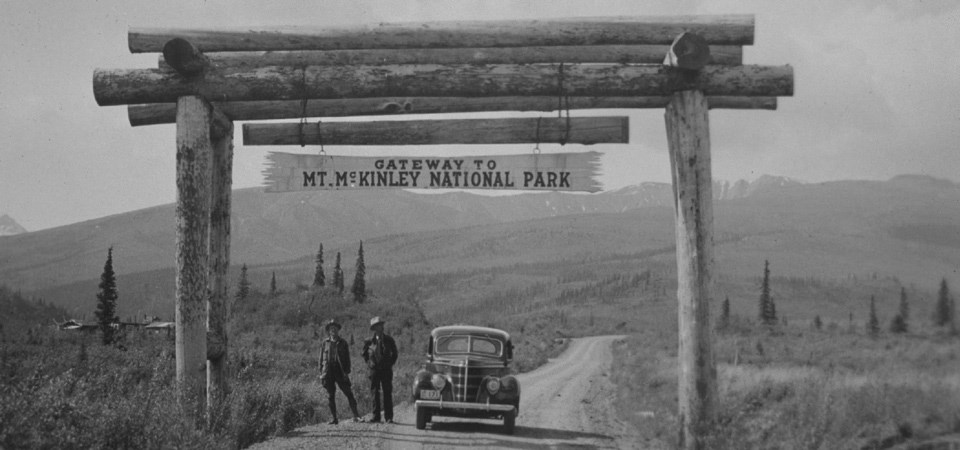
Mount Denali, formerly Mt McKinley
Mount Denali, the tallest peak in North America, has a long and layered history with its name. For thousands of years, indigenous Alaskan people, particularly the Koyukon Athabascans, referred to the mountain as “Denali,” which means “The Great One” or “The Tall One” in their language. This name reflects the mountain’s significance in their culture, where it is seen as a powerful and revered landmark.
In 1896, however, a prospector named William Dickey, who was surveying Alaska for gold, decided to name the mountain “Mount McKinley” after then-presidential candidate William McKinley, who later became the 25th president of the United States. This naming was a gesture of support for McKinley’s pro-gold-standard stance, although McKinley himself never set foot in Alaska. In 1917, the name “Mount McKinley” was officially adopted by the federal government when the area around it was designated as Mount McKinley National Park.
Over the following decades, Alaskan indigenous communities and residents pushed for the mountain to be officially recognized as “Denali.” They argued that the original name honored the cultural and historical heritage of Alaska’s indigenous people. In 1975, the Alaska State Legislature requested that the U.S. government change the name back to Denali. However, due to political resistance, particularly from representatives in McKinley’s home state of Ohio, the name change was stalled for years.
In 2015, the debate was finally resolved when the U.S. Department of the Interior, led by Secretary Sally Jewell (whom I absolutely love and admire), officially restored the name “Denali” to the mountain. This change was made under the authority of the federal government and reflected a broader respect for indigenous names and the cultural significance they hold. The announcement was widely celebrated across Alaska, as “Denali” more accurately represents the mountain’s ancient heritage and its meaning to the people of the region.
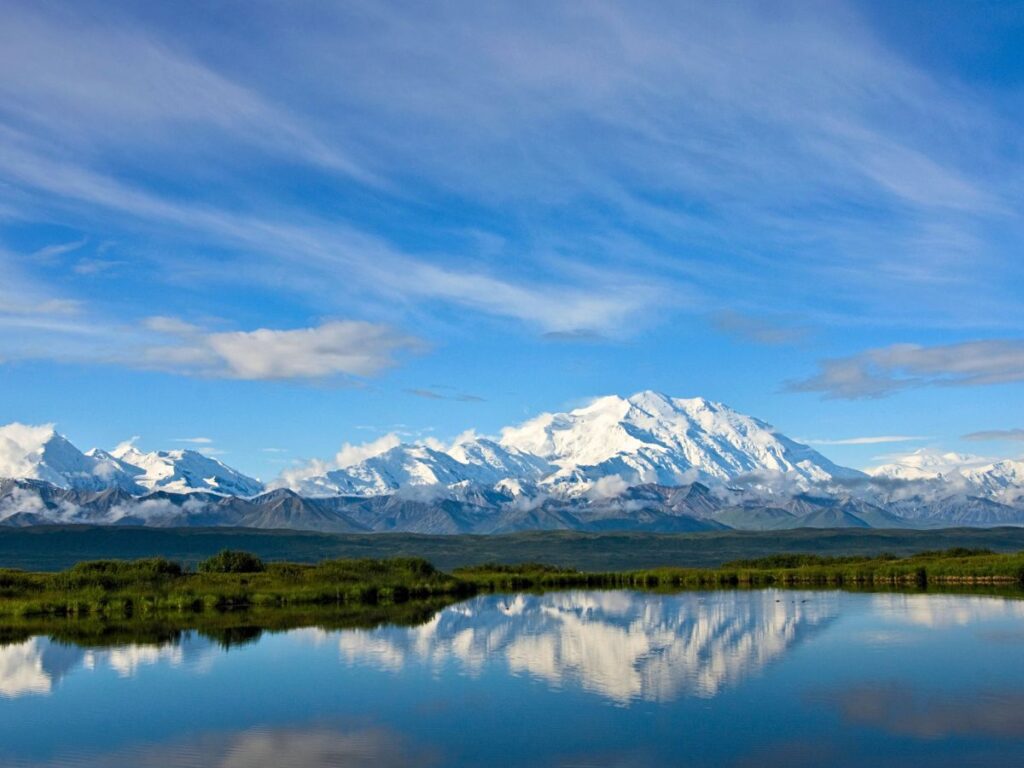
Top Things to Do in Denali National Park
So with such a giant National Park and such limited access for humans, just what are the things to do in Denali National Park? A ton! Access into the park is limited when it comes to driving a private vehicle, but that’s okay. Please check out our 3 Day Denali NP Itinerary to put together your own plan for accessing the part and figuring out just how you want to spend your time.
Wildlife Viewing in Denali National Park
One of the most popular activities in Denali is wildlife viewing, as the park is home to an impressive variety of animals, including grizzly bears, wolves, moose, caribou, and Dall sheep. I mean, wildlife is literally the reason Denali NP was set aside and protected. Since vehicles are restricted beyond Mile 15 on the Denali Park Road, visitors can take park-operated shuttle buses or tour buses deeper into the park, where they have better chances of spotting animals in their natural habitats. The best time for wildlife viewing is during the summer months, especially June through August, when animals are more active and easier to spot.
I love visiting Denali National Park in September because the tundra is starting to change colors and the wildlife is much more visible against the reds and oranges. The bull moose and caribou are much easier to spot in fall as they have lost the velvet from their antlers and the creamy white color really stands out against the foliage across the park.
Here’s how to enjoy wildlife viewing in Denali National Park (and LOTS of wildlife info below):
- Self-drive to mile 15, stopping for off-trail hiking along the way; driving up to mile 30 is allowed at the end of summer once buses has stopped
- Denali Park Transit Bus – non-narrated bus transportation as far as Wonder Lake (when the road is fully open); hop on and off as you like with your ticket
- Tundra Wilderness Tour – longest guided, narrated tour into the park, 6-8 hours depending; goes to mile 43 currently, and then when the Park Road reopens fully in 2026 it’ll do its fully route
- Denali Natural History Tour – a shorter adventure into the park, it’s narrated and focuses on both human and geologic history while watching for wildlife; 4-5 hours.
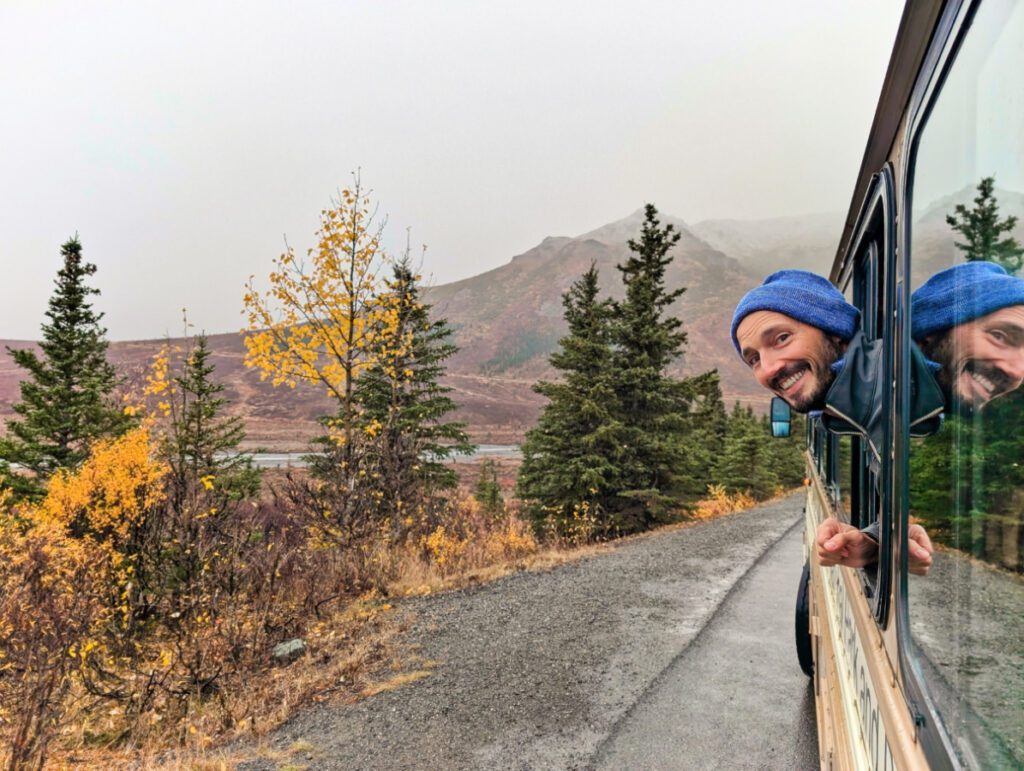
Off-Trail Hiking in Denali
Denali offers an array of trails and off-trail routes, making it a prime destination for hikers and backpackers. The park has designated trails near the entrance, such as the Horseshoe Lake Trail and the Savage River Loop, but much of Denali remains a true wilderness experience with no marked trails beyond this area. This allows for a unique, free-form hiking experience where visitors can explore the wilderness as they wish, provided they practice Leave No Trace principles and are prepared for remote conditions. Hiking is most popular from late June through early September when the snow has melted, and the weather is more favorable.
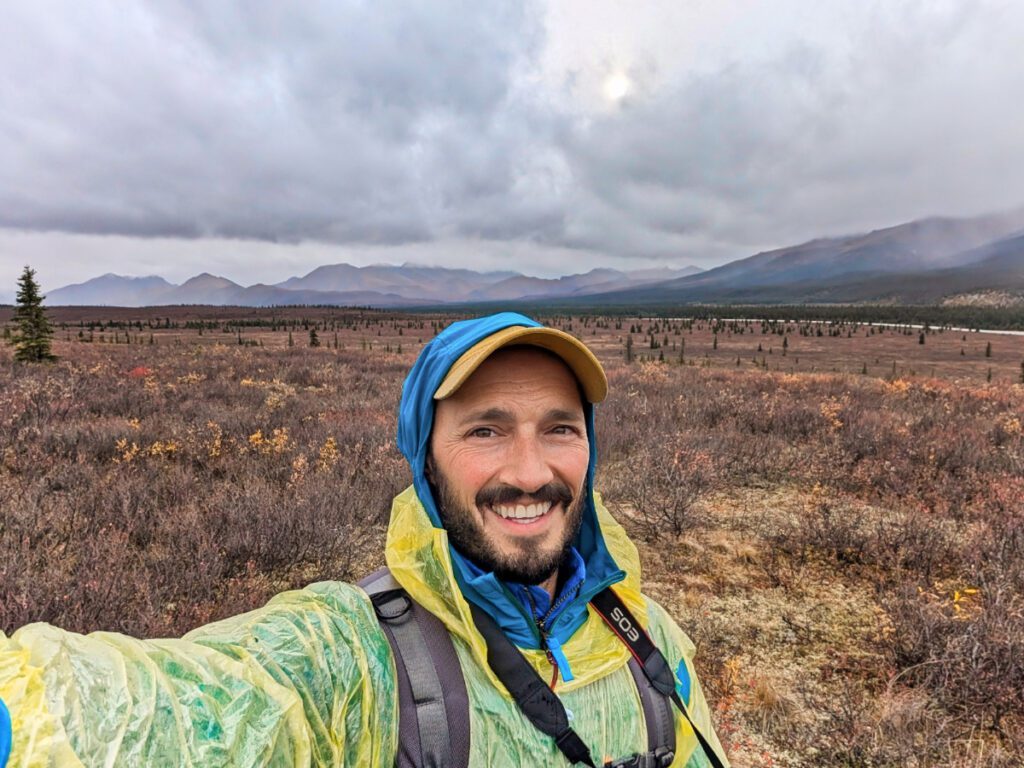
Photography and Scenic Drives
Denali’s dramatic landscapes, particularly the view of the mountain itself, attract photographers eager to capture the scenery and wildlife. The Denali Park Road offers stunning views of Denali and surrounding landscapes, with designated scenic spots ideal for capturing sunrise, sunset, and wildlife photos. Even though private vehicle access is restricted, between the drivable 15 miles and bus access, you’ll have plenty of opportunities to set up for photography.
Photography opportunities abound in the summer, though fall colors in September also make for beautiful shots. Winter photography is equally incredible if you can brave it and are prepared to access via snowshoes and skis, with opportunities to capture the northern lights, snow-covered landscapes, and winter wildlife. The only time I’ve been able to see a lynx in Denali NP was when everything was covered in snow and we braved it. It was amazing!
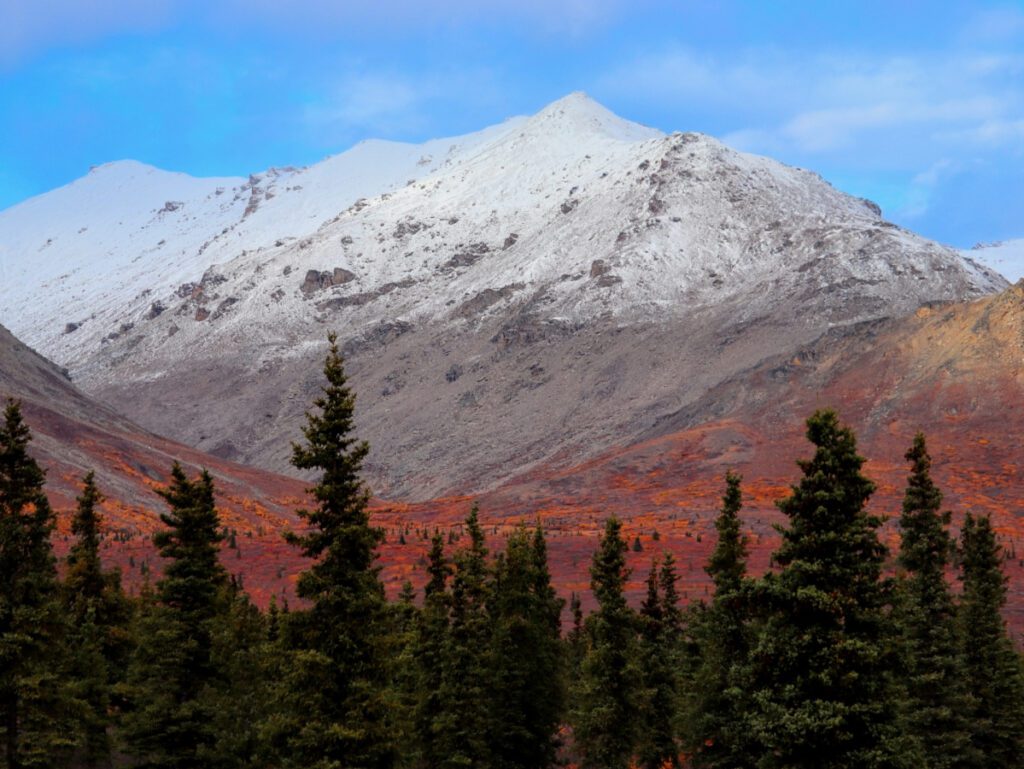
Denali NP Sled Dog Kennels
If you’ve not gotten to visit a sled dog farm or kennels before, you need to add this to your Denali National Park visit. Denali is the only park that has its own sled dogs and that does sled dog patrols. In the summer, they keep the dogs active and in shape with running and exercises, and they open the kennels for visitors. It’s pretty neat to see how excited the dogs are, and to get to be a sled dog in Denali National Park? That must be a sled dog goal.
Ethics of Dog Sledding and Sled Dog Operations
We are very careful about animal tourism of any sort and only share/write about operations and opportunities that we feel are ethical and sound. There’s often talk about dogsledding and concern that it’s not in the animals’ best interest or even, as PETA may say, is cruel. If you’ve ever met a sled dog or been to a sled dog farm or operation, then you know that’s not true. Sled dog mushers and their teams are some of the most caring, heartfelt people I’ve ever met. The way their dogs are treated is impeccable, often with the needs of the dogs being placed before that of the musher/sled dog owner.
If you see sled dogs before, during and after they’ve been training or racing, then you see the joy and purpose they find in dogsledding. They are so full of energy and excitement all through the process. Add to that the love and attention their mushers give them, and you’ll understand that dogsled culture is not cruel or unethical.
Seasons and Visitor Center Operating Hours
Denali National Park experiences dramatic seasonal changes, with each season offering different activities and landscapes to explore. I much prefer summer and fall to winter and spring, but depending on when you actually get the change to visit, you’ll have to roll with what you’re dealt. May through September, the visitor centers provide information, resources, and interpretive exhibits to enhance the visitor experience.
Denali National Park Visitor Centers
Located near the park entrance, the Denali Visitor Center is open daily from mid-May through mid-September. It features educational exhibits, ranger programs, a film about Denali, and a bookstore. In the summer, visitors can join ranger-led hikes and talks, which provide a deeper understanding of the park’s natural and cultural history. There’s also a gift shop and cafe across the walkway.
When you’re here, you can take time to watch a film about the history of Denali National Park, get tips for hiking from the rangers, get a Junior Ranger packet to complete, and enjoy ranger talks. There are actually a few trails that go out from the main visitor center, so if it’s not your bus tour day, this is a great opportunity to go on a maintained trail hike.
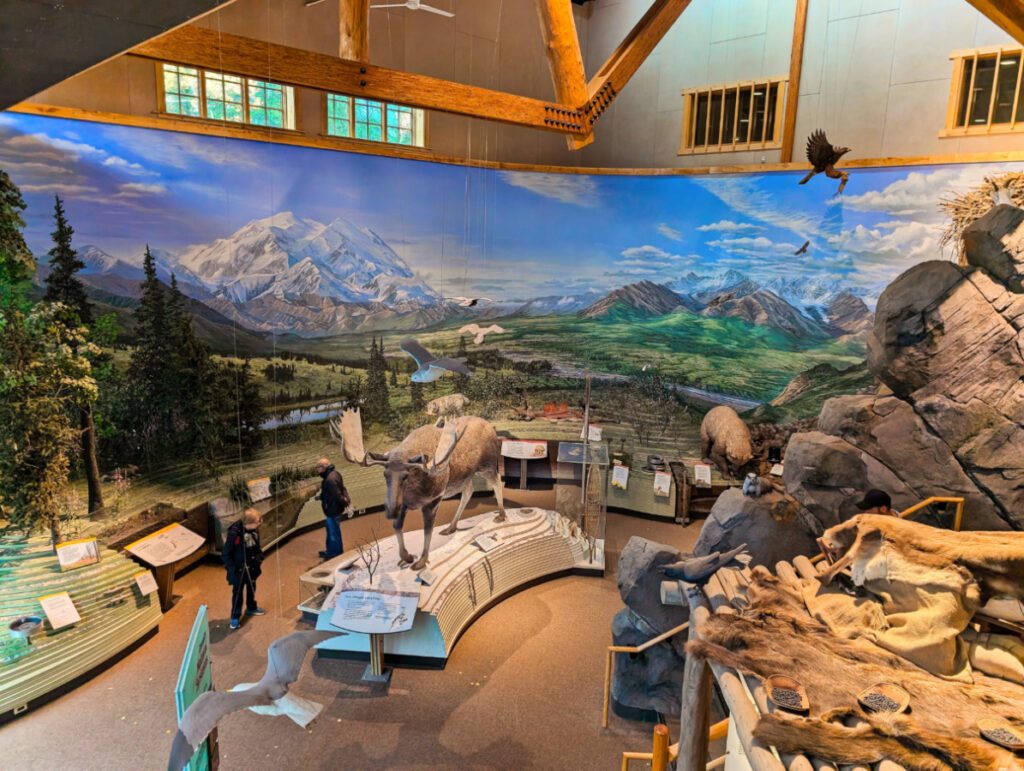
Murie Science and Learning Center
The Murie Science and Learning Center acts as the winter visitor center from mid-September to mid-May. It offers limited services and visitor information during the colder months. The center is open year-round and provides exhibits on the park’s ecosystems and ongoing scientific research, including climate studies and wildlife conservation. I’ve never actually gotten to go inside, but I hear it’s pretty cool, and it’s a unique resource for winter visitors.
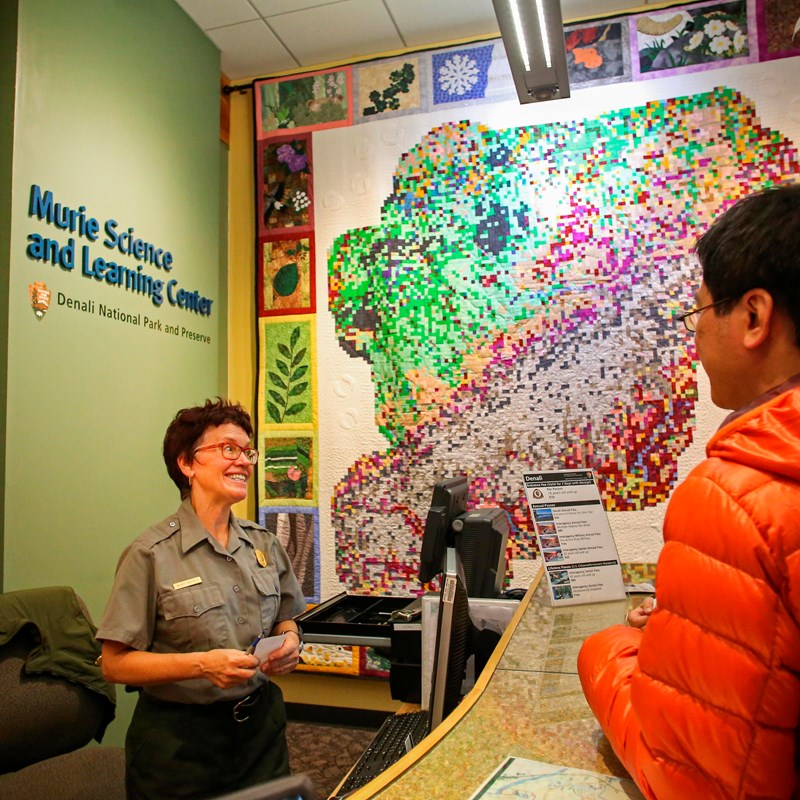
Eielson Visitor Center – CURRENTLY CLOSED
Situated at Mile 66 along the Denali Park Road, the Eielson Visitor Center has a beautiful view of Denali on clear days and has lots of exhibits on the park’s geology and ecology. When the Park Road is open and Transit Buses are going, Eielson is open from early June through early September, accessible only by the park’s shuttle and tour buses. Visitors to Eielson can hike nearby trails or simply enjoy the sweeping views of the mountain and tundra.
Note: this is one of the few places with maintained trails in Denali National Park. Off-trail hiking is allowed here too, but if you do want to go on a set path, this is the spot.
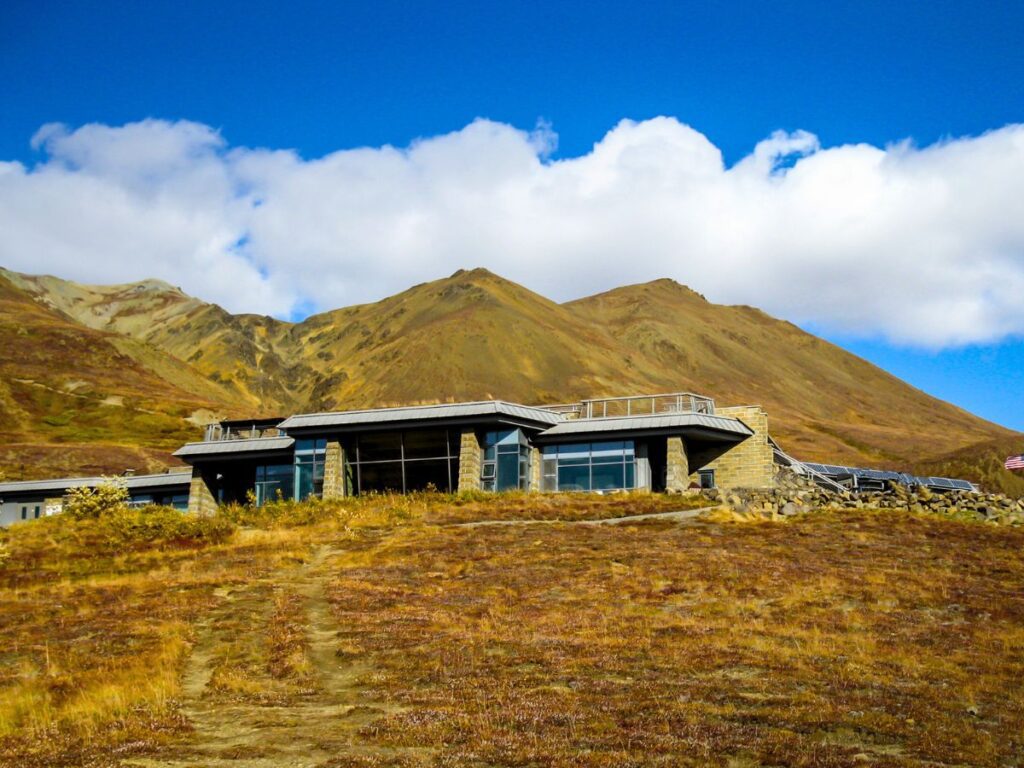
Current Park Road Closure and Projected Reopening Dates
I love taking the bus deep into the park. The Denali Park Road, a 92-mile road that provides access to the heart of the park, has experienced significant disruptions due to a landslide at Pretty Rocks, located around Mile 45. The landslide, which has been active for several years, accelerated in 2021, making it unsafe for vehicles to pass beyond this point. In response, the National Park Service (NPS) and the Federal Highway Administration initiated the Denali Park Road Permanent Stabilization Project, which involves constructing a bridge over the landslide area to restore access.
The closure currently limits visitor access to Mile 43 (just before the landslide zone) until the construction of the bridge is complete. The NPS anticipates reopening the full length of the road to private vehicles and shuttle buses by 2025, pending the project’s progress. Until then, most tours and shuttle buses will operate only up to Mile 43, and the Eielson Visitor Center remains temporarily inaccessible by road.
While the park road closure currently limits access beyond Mile 43, there is still plenty to see and do near the entrance, and the park’s abundant wildlife, rugged landscapes, and hiking opportunities continue to make it a top destination, and not just for National Park geeks like me.
Check the closure information here for the LATEST updates!
Wildlife in Denali National Park
I love Alaska wildlife and Denali National Park really is THE place to see so much of it. Denali is celebrated for its rich and diverse wildlife, from large mammals to birds. Here are 15 species you’re likely to encounter in the park (including my favorite owl!):
- Grizzly Bear – Grizzly bears are commonly seen foraging on the tundra, particularly in summer when they feed on berries and roots. They are often spotted along the Denali Park Road.
- Moose – Denali’s moose population is most active during the fall rutting season, which occurs from mid-September to early October. Male moose, known as bulls, engage in dramatic displays and sparring during this time to attract mates.
- Gray Wolf – Denali is one of the few national parks where wolves roam freely. While elusive, wolves may occasionally be seen along the park road, especially in the early morning or evening.
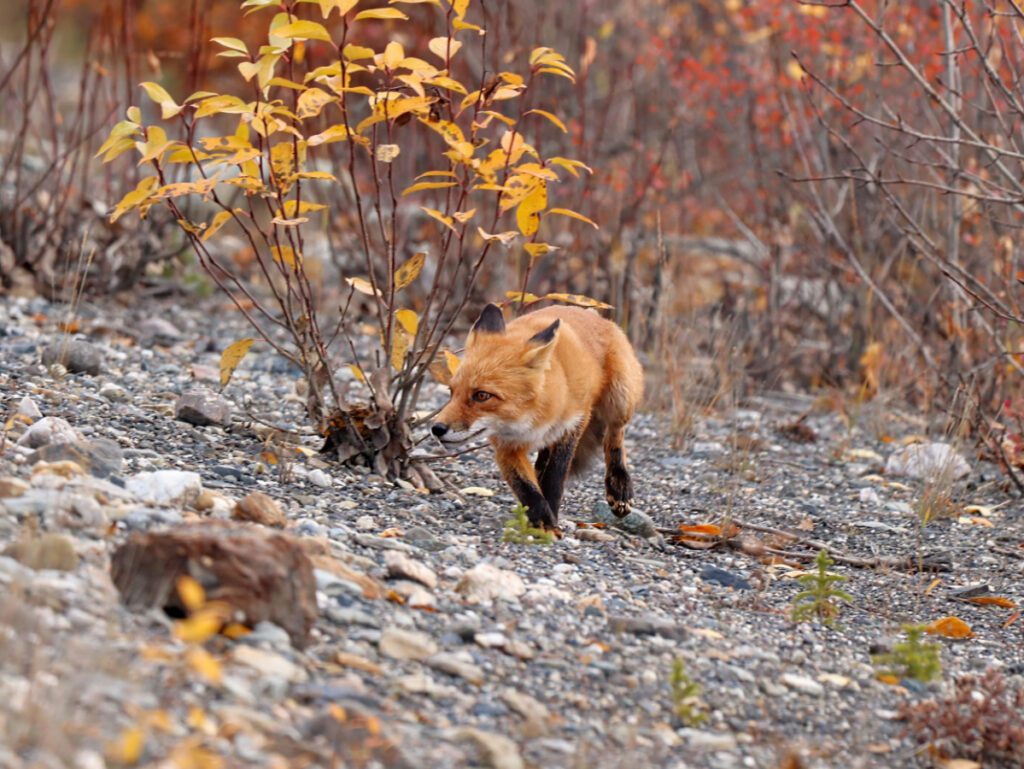
- Dall Sheep – Dall sheep can be found on the steep mountain slopes, particularly in areas like Polychrome Pass. They are recognizable by their white coats and impressive curled horns.
- Caribou – These animals roam the park’s vast tundra landscapes and are commonly seen in large herds. Caribou are an iconic symbol of the Alaskan wilderness.
- Red Fox – The red fox is frequently spotted near the park entrance and along the Denali Park Road. They are known for their curious nature and striking coloration.
- Snowshoe Hare – Snowshoe hares are abundant in the park and undergo a seasonal color change, from brown in the summer to white in the winter to blend with the snow.
- Golden Eagle – These large birds of prey are often seen soaring over the mountains and tundra in search of small mammals. Golden eagles nest in the park and are particularly active during the summer.
- Northern Hawk Owl – Known for its daytime hunting habits, the northern hawk owl can occasionally be seen perched in trees, scanning for prey.
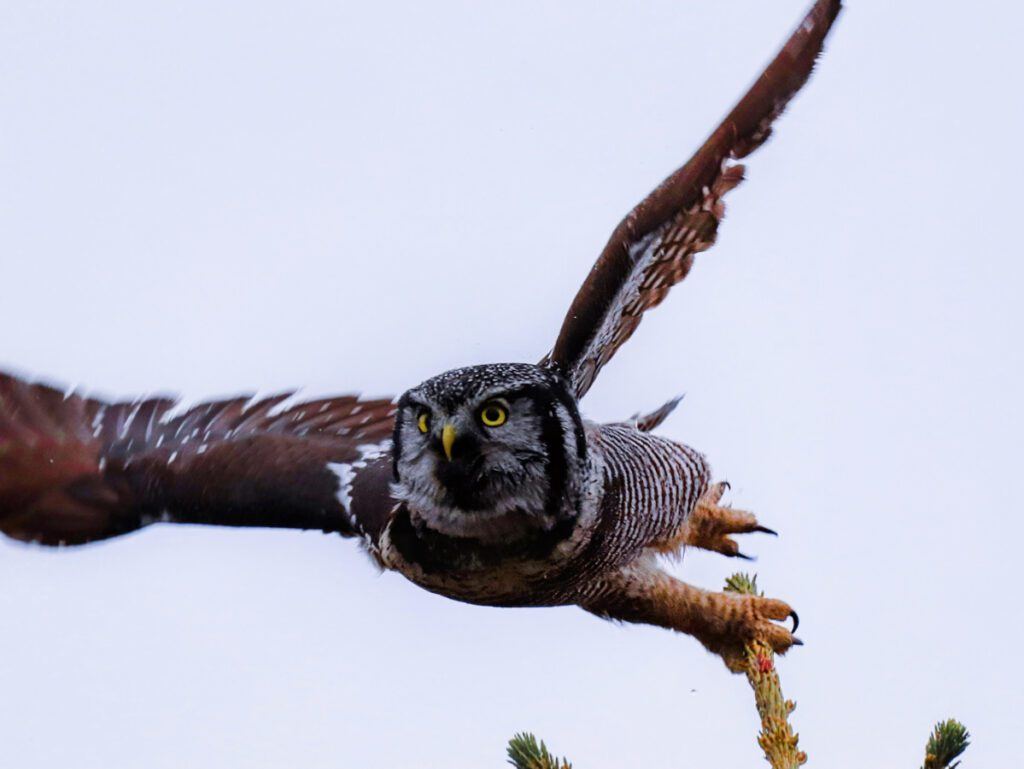
- Pika – These small, mountain-dwelling mammals are related to rabbits and live among the rocky slopes. Pikas are known for their high-pitched calls and their habit of storing vegetation for winter.
- Arctic Ground Squirrel – These squirrels are abundant in Denali and are often seen in open tundra areas. They hibernate for most of the year, emerging in late spring.
- Lynx – Although rarely seen, lynx inhabit the forests of Denali. They primarily hunt snowshoe hares and are more active at dawn and dusk.
- Porcupine – These spiky rodents are found in Denali’s forests and occasionally along trails. They are typically solitary and feed on vegetation.
- Willow Ptarmigan – This bird, Alaska’s state bird, is well-adapted to the cold and changes its plumage from brown in summer to white in winter for camouflage.
- Trumpeter Swan – These elegant birds nest in the wetlands and lakes in Denali. Trumpeter swans are the largest native waterfowl in North America and are most commonly seen during migration periods in spring and fall.
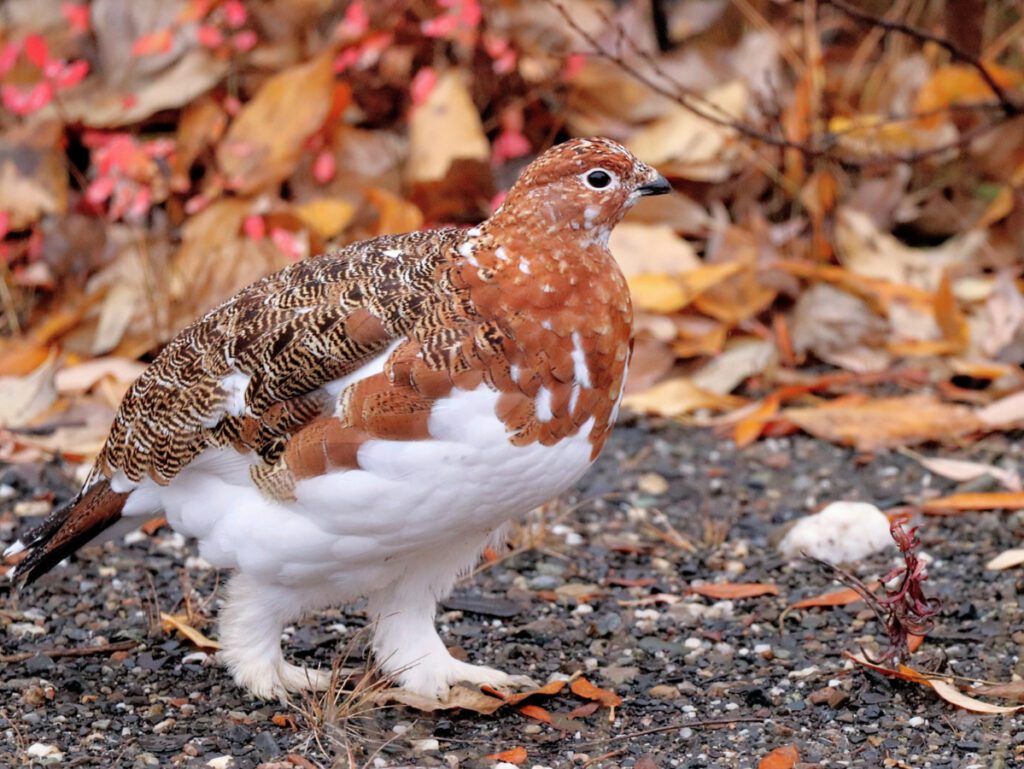
The Moose Rut in Denali
The moose rut, or mating season, occurs in Denali National Park from mid-September to early October. During this time, male moose (bulls) become more active and display elaborate behaviors to attract females, including vocalizations, scraping their antlers on trees, and sometimes engaging in intense sparring matches with other bulls. Visitors are advised to maintain a safe distance, as moose can become unpredictable and aggressive during the rut.
The Park Rangers will actually close a good portion of the park road between the visitor center and Savage River to foot traffic during the rut. They’ll put up signs prohibiting getting out of your car in certain areas due to the concentration of agitated moose. It’s pretty cool.
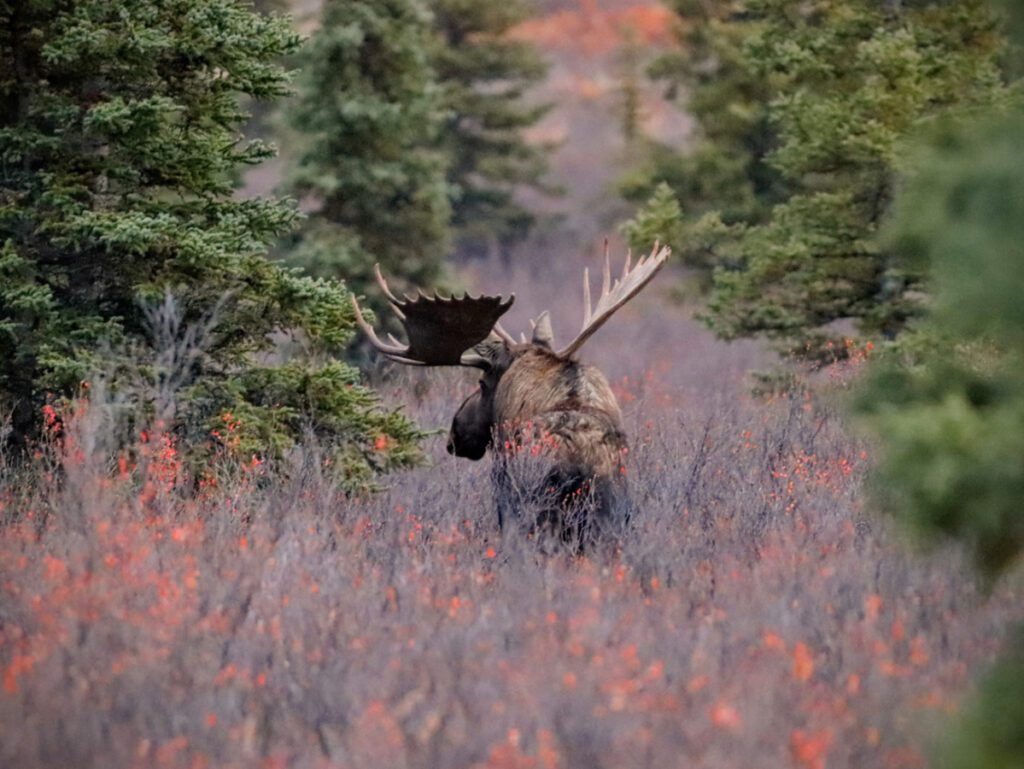
Where to Stay at Denali National Park
When you’re planning your trip to Denali National Park you can choose to stay in the townsite outside the park, somewhere within an hour of the park (Healy or Cantwell) or you can camp IN the park. Camping in Alaska is complicated unless you live here are you’ll need to rent all the gear and then it’s not familiar and it’s a bit of a pain, BUT IT’S DOABLE. Between renting gear and a car OR renting an RV, the cost comes close or up to more than a hotel or lodge.
Outside the park there are lots of options, albeit most are quite expensive. I think planning your visit to Denali National Park to have only a few nights in a hotel here and then moving onto another destination is a great way to manage your travel costs and keep your Alaska trip moving along nicely.
Within the townsite, the lodges are pretty nice, with much of the tourism being built around accommodating cruise tour guests, such as the Denali Princess Wilderness Lodge (I used to work here!), the McKinley Chalets (Holland America) and others. Other options include Denali Village, the Denali Bluffs and the Grand Denali Lodge.
Note: keep in mind that most of the hotels at Denali National Park close in early or mid September, so if you’re visiting at the end of the summer, you’ll be very limited. After September 10th or so, most of the town is already shut down.
As I said, staying within Denali National Park is limited to camping (unless you’re really fancy and get to stay in Kantishna deep in the Park. There are some great lodges near the entrance to Denali NP and the surrounding area, as well as unique, Alaskan vacation rentals.
Where to Eat Outside Denali NP
The townsite outside of Denali National Park has lots of restaurants, and each hotel or lodge has one too. Restaurants at the lodges aren’t typically limited to only those guests staying AT the respective lodge, so depending on how busy everything is and what sounds good, explore a different property than where you’re staying.
Here are my top picks for dining outside of Denali National Park, and keep in mind that some of these spots will also do to-go or picnic lunches if requested in advance.
- Denali Doghouse – my kids’ favorite
- Prospector’s Pizzeria & Alehouse – awesome pizza
- Karstens Public House – at the McKinley Chalets, good burgers
- Lynx Creek Pizza – at the front of Denali Princess Wilderness Lodge
- Canyon Steakhouse – fancy and delicious
- Grab and Go – lunches and easy food
- Chinese Express (Thai and Chinese food to go) – open late in the year
There are more options, but these are our favorites. If you have a favorite, we’d love to hear about it and try it next time we’re in town.
More Denali ideas and activities:
I hope you’re excited to experience everything Denali National Park has to offer. I love it here!. Between the beautiful views, wildlife and sense of Alaskan adventure, I know you’ll love it too. If you have any questions about visiting Denali, Alaska’s Interior, or planning your own road trip through the state please leave a comment or send us a note. We’re always happy to help with travel planning for an Alaska Trip!
